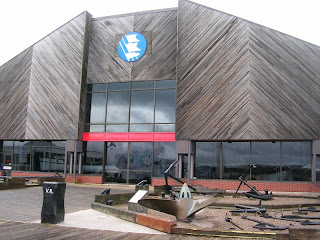SS Resolven: The Marie Celeste of Wales
The fate of SS Resolven is a mystery which has intrigued Mr Colin Evans for a number of years. This was rekindled when Colin visited Halifax Maritime Museum, Nova Scotia in 2008. This is how Colin describes the process since then.
Theories about SS Resolven
After the members meeting of December 2010, Mr Colin Evans asked three other people to help him, namely Hon.Sec Trefor Jones, David Woosnam and William Willis, with the gathering of information about what happened to the SS Resolven during July/August 1884/85. After much deliberation we agreed on four theories which may have occurred about the fate of the ship. The four theories will be set out individually.
First Theory
The book "Resolven" published in the 1980s by local historians John Mc Mahon and Alun Evans featured a chapter on the disappearance of the brig Resolven ( The Marie Celeste of Wales). The book states,
" The Master of the ship Mullard ( correct name Mallard) who found the ship Resolven had sighted icebergs in the area and it was assumed that the brig had collided with one of these. Captain Jones ( correct name James) who was inexperienced in such waters must have decided to have abandoned ship, and as the small ship was pulling away it must have been swamped in the wake of the iceberg. Captain Jones ( correct name James) and the crew were never seen again."
However, this is only one of several theories regarding the disappearance of the SS Resolven. Colliding with an iceberg may not be the real answer, since this happened during the summer months of 1884/5. Iceberg collision, while not impossible is highly unlikely at that time of year. The fire was also lit and table was also set for dinner? This points to a rapid and unexpected evacuation of the ship. Also, it was in daylight and the watchman would surely have spotted an approaching mass of ice ( unless it was mostly underwater). The explanations range from the natural, to the criminal and social of that particular era in the history of Canada. It is the intention of this article to put the three other theories in place on a monthly basis and invite comment from anyone far and wide. This is a fragment of history which well deserves attention.
Theories about SS Resolven
After the members meeting of December 2010, Mr Colin Evans asked three other people to help him, namely Hon.Sec Trefor Jones, David Woosnam and William Willis, with the gathering of information about what happened to the SS Resolven during July/August 1884/85. After much deliberation we agreed on four theories which may have occurred about the fate of the ship. The four theories will be set out individually.
First Theory
The book "Resolven" published in the 1980s by local historians John Mc Mahon and Alun Evans featured a chapter on the disappearance of the brig Resolven ( The Marie Celeste of Wales). The book states,
" The Master of the ship Mullard ( correct name Mallard) who found the ship Resolven had sighted icebergs in the area and it was assumed that the brig had collided with one of these. Captain Jones ( correct name James) who was inexperienced in such waters must have decided to have abandoned ship, and as the small ship was pulling away it must have been swamped in the wake of the iceberg. Captain Jones ( correct name James) and the crew were never seen again."
A sketch of the Brig Resolven by Mr R Cockwell







